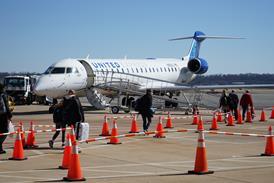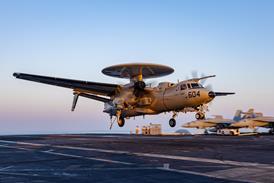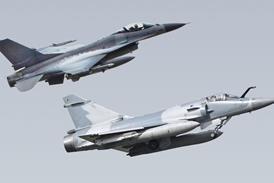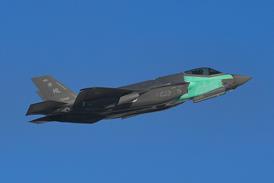Almost all the passengers on board the Japan Airlines Airbus A350 involved in the Tokyo Haneda runway collision evacuated through the two forward exits after the jet rolled to a halt.
Just three of the twinjet’s eight exits – the forward right- and left-hand doors, and the rearmost right-hand door – were opened after the accident, says the Japan Transport Safety Board.
While touching down at Haneda on 2 January 2024, the A350-900 struck a Coast Guard De Havilland Dash 8-300 which had strayed onto the active runway 34R.
The A350 was transporting 367 passengers and 12 crew members. All survived the accident.
Badly damaged by the collision, the aircraft rolled off the right side of 34R and came to a halt on grass, where a fire – which had originated underneath the fuselage during the impact – took hold.

One of the cabin crew informed the captain of the fire, but the evacuation command system and public-address system were not available, so the captain’s evacuation order was verbal.
The crew proceeded to follow a checklist to shut down the Rolls-Royce Trent XWB engines and activate engine extinguishers, but while the left-hand engine shut down the right-hand engine did not. After completing the checklist the crew left the cockpit to assist with evacuating passengers.
Smoke had started rising from gaps between the floor and side walls near the third set of exits from the front, but the cabin crew was unable to communicate over the intercom.
Flight attendants at five exits, however, saw fire outside their stations and determined that their doors could not be used.
The cabin crew at the two forward exits, L1 and R1, confirmed they were available and opened them just over 4min after the collision.
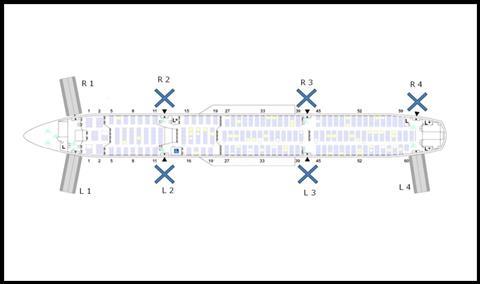
Cabin crew at the next set of doors, L2 and R2, which were among those unavailable, instructed passengers to move forward but those at the remaining exits – L3 and R3, L4 and R4 – could not use the intercom and, with smoke becoming thicker, had to shout to one another while remaining at their stations to prevent passengers’ using the doors.
“Emergency lights installed on each door and the ceiling of the cabin aisle were on,” says the inquiry. “As a result, the cabin was kept bright enough to allow the surroundings to be seen.
“However, as smoke filled the cabin over time, visibility deteriorated, especially in the rear of the cabin.”
The captain and a senior attendant moved from the front towards the rear of the cabin to assist these crew members in instructing passengers to move to the forward exits.
But as smoke filled the cabin and the situation “became urgent”, JTSB says the flight attendant at the rearmost left-hand door – who was unable to hear instructions from the captain – judged that they had to open the exit, after confirming it was clear.
This exit, L4, was opened about 7-8min after the collision.
While the majority of passengers, about 340-350, escaped through the two forward exits, L1 and R1, about 20-30 passengers left through L4.
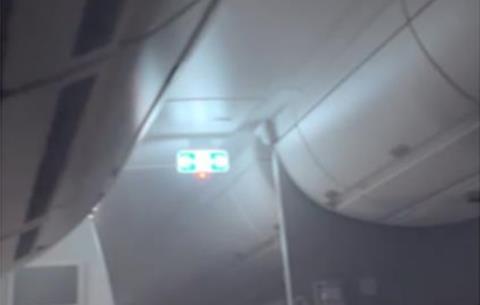
Some passengers, who had not directly been given an evacuation order, followed other passengers to the doors. But some had stayed near their seats to await further instructions, and were found by the captain during his search for any passengers who had not managed to escape.
After confirming no passengers remained on the burning aircraft, the captain left through the L4 exit about 3min after it had been opened.
JTSB says a number of passengers had taken photographs in the cabin during the evacuation. While it says such actions could “hinder” escape, it also acknowledges that the pictures provided “important information” which “would have been difficult to obtain by any other means”.
Investigators are still analysing the evacuation, but indicate that several factors contributed to the survival of all on board the A350.
These include the fact that passengers were not seriously injured by the impact, the aircraft did not invert, and its internal structure remained intact. Most passengers used the L1 and R1 doors, whose slides were less steep owing to the nose-down position of the jet when it came to rest, while the fire took about 10min to reach the cabin.

